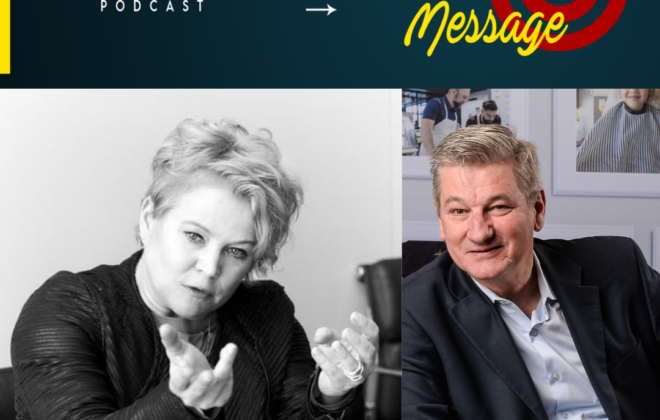More Story. More Glory.
In-depth insights into storytelling and narrative communication in complex times.
Buzzword of the decade, often used meaninglessly or hopelessly overloaded with meaning: STORYTELLING in the corporate context. In the shade of fake news, often drawn into credibility doubts, praised as a panacea in the light of emotional customer loyalty. As (almost) always, the truth lies somewhere in the middle. Story-Work (with the “Telling”-part as the crowning conclusion) sees itself as a narrative communication tool that can be used across all formats and channels. Always with the aim to go stronger with the audience into RESONANCE, to make messages RELEVANTER and to bring customers and brands into CONGRUENCE. Here are some tangible offers for brands and organizations to get orientation in the jungle of narrative hype in fast-moving times, a crazy complex world and constant change.
1) The brain is already story-wired.
Storytelling helps to communicate in a brain-friendly way. Our brain perceives the environment not in information packages, but in relational contexts. Therefore it is easier to reach customers emotionally with stories instead of bombarding them with facts and 10pt-described Power Point slides. The re-thinking process however begins in one’s own head.
2) Who has no story, can’t tell one.
To deepdive into the question “What’s your –real- story “, is the most exciting journey into the unknown, on which individuals, brands and enterprises can go at the moment. Who knows where one comes from, who one is and where one wants to go, creates STABILITY and CLARITY inwards and to the outside world. Long-term return on investment: emotionally connected customers & employees. Sometimes the dream job also beckons.
3) What stories really contribute a lot to
When it comes to creating LIABILITY, strengthening the commonalities. If all eyes are to look in one direction, stories function excellently as lighthouses: give LIGHT and ORIENTATION in order not to lose sight of the common goal. Stories strengthen CONNECTION – regardless of whether it’s from the “it’s the same with us” impulse or from the “I’ve never done it this way before” impulse.
4) Stories set changes in motion.
Getting to the bottom of the question “What’s your real story” is the most exciting journey into the unknown that a company can embark on at the moment. Long-term return on investment: customers emotionally connected to the company.
5) Stories begin when something happens.
The natural tension bow that leads an audience to listen to a story to the end begins the moment something changes. Sounds banal, but it is crucial for lasting audience loyalty.
6) What is it all about?
As a question, something like opening Pandora’s box of working with stories. Because effective stories are always about something deeper than “boy meets girl” or “product-market-price-launch”. It’s more about winning, friendship, daring and paths you’ve never taken before.
7) Archetypes anchor. Quickly. With everybody.
Hero journeys, saviours, all kinds of love or betrayal are emotional categories to which a) all and b) can quickly connect. They lay the foundation for any effective story and provide the first resonance between narrator and audience. ARCHETYPES are the common anchor on which both sides can build.
8) Think stories from the beginning to the end.
If you look back to your story – turning points can be worked out more exactly and side scenes, which are detrimental to the message, can be eliminated. Always keep in mind: the audience’s attention goes where the energy of the narrator directs it. So it’s worth checking beforehand what the audience should talk about afterwards.
9) No drama – no story.
Every protagonist of a story only receives the appropriate meaning within the story through the correspondingly strong opponent (antagonist). (Where would 007 be without his world-destroying villains?). Comprehensible turning points and conflicts fill stories with life just as much as experiencable highlights. When it comes to solution and morality, trust the audience: there is no need for a happy ending. But if you don’t dare to do the DRAMA, don’t tell the story at all. And if you dare to tell a story, don’t spare the drama.
10) Our senses provide small stories in themselves.
No time or desire for the complete package? Thats ok. Often it is enough to call up a sensory perception in the audience that triggers a certain feeling. Simple analogies are enough: “That has sounded, felt like… That smells like… ” When the appropriate picture comes, the corresponding emotion is not long in coming.
11) Storytelling is an employee thing.
Colleagues are natural carriers of the story gene. First: because they experience them every day. Second: They talk about it anyway! Internally in the coffee kitchen and externally at the customer pitch. The more they become an active part of the story, the more they can radiate and connect brand and company with their own individuality. Listening and letting themself tell the story – this is how employees become brand ambassadors. If the stories are not anchored in each individual, the flame of enthusiasm quickly goes out or degenerates into a corporate value poster on the wall.
12) Storytelling works inside-out.
The best corporate stories come from within the company itself. More effective than any top-down marketing message. The broader the story base within the company, the greater the chance of discovering similarities. This breathes life into them and they will be told about frequently and enthusiastically. (Has already worked with the Brothers Grimm. Do you remember?)
13) Successful narration works cross- and transmedially.
When one realises during campaigning that the story cannot be transferred to another medium or another target group should start all over again. Internally, storytelling automatically demands cross-departmental communication. Because colleagues and employees are the first audience. Successful communicators change from communicative gatekeepers to encouraging chief story officers.
14) If you have a story, you should tell it effectively.
As authentic as possible, as much drama and emotion as necessary. To put it with Doug Stevenson: Don’t TELL your story. BE your story.
The author is a communication coach, keynote speaker on gender and leadership communication and storytelling trainer for companies, agencies and organisations (www.interview-training.eu). She is firmly convinced that talking is gold and silence is the beginning of all misfortune and that talking with stories is easier. Feedback is best received at ks@interview-training.eu or vi






